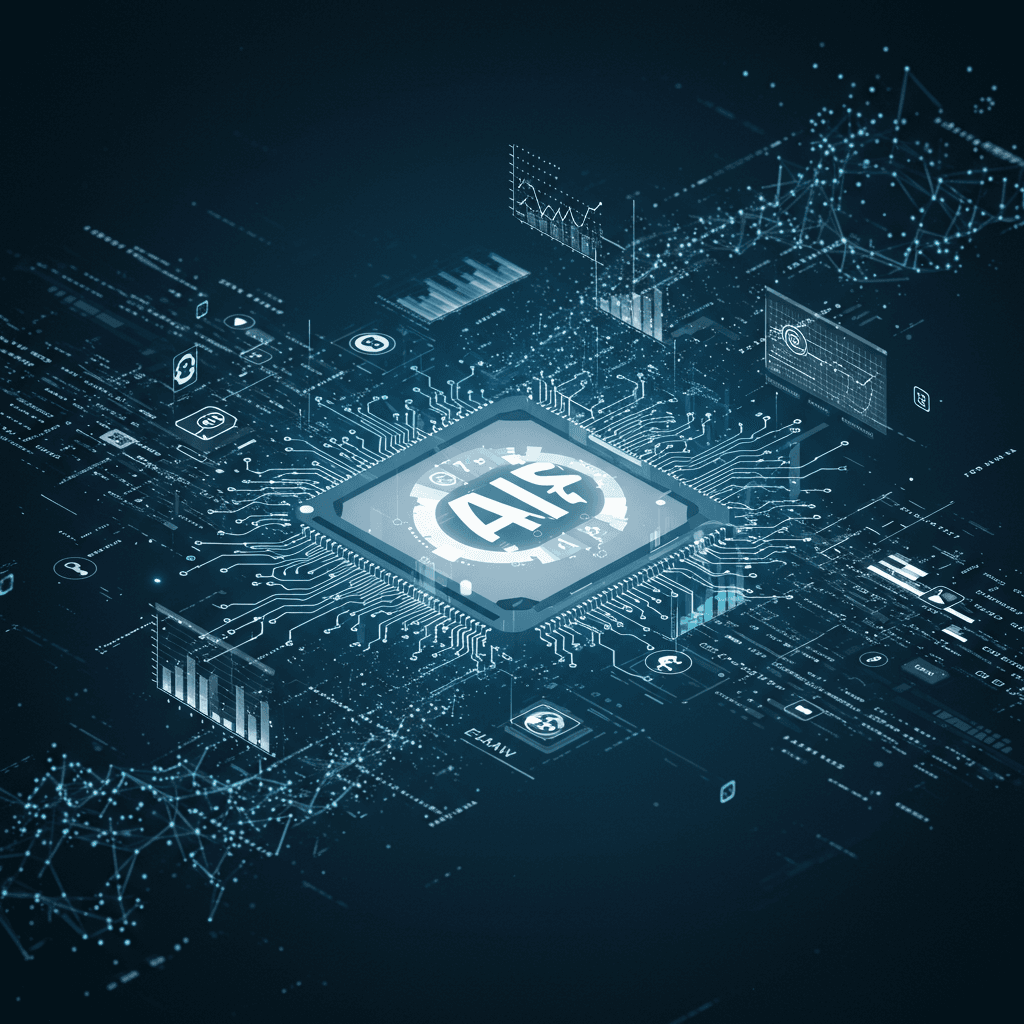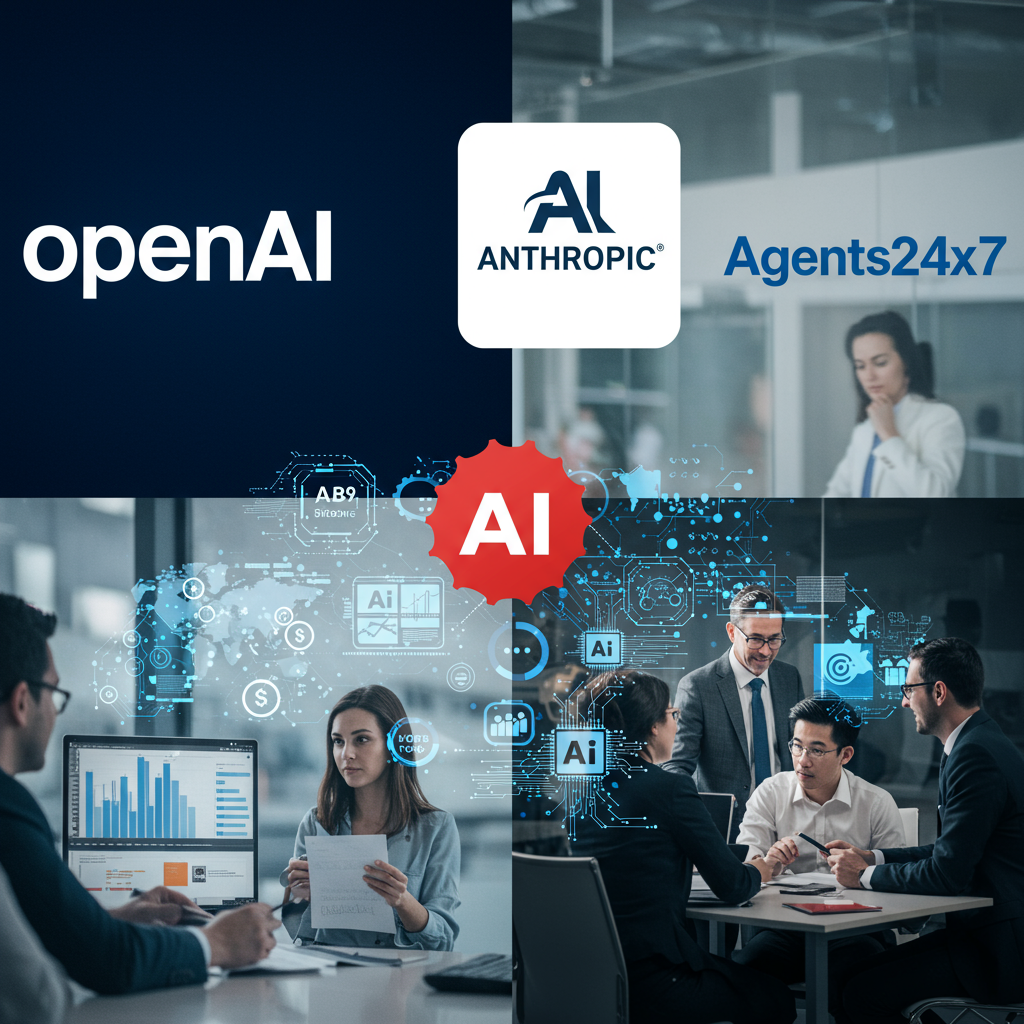AI Services Price Comparison: OpenAI, Google, Anthropic
Compare leading AI services pricing: OpenAI, Anthropic, Google, and Agents24x7. Discover models, features, and why Agents24x7 offers the best ROI for SMEs.

AI Services Price Comparison: OpenAI, Google, Anthropic & Agents24x7
In today’s rapidly evolving digital landscape, selecting the right AI platform is crucial for small and medium-sized enterprises (SMEs) aiming to maximise automation and efficiency. This comprehensive guide delivers a detailed AI services pricing comparison between leading providers – OpenAI, Anthropic, Google, Microsoft, and Agents24x7. We will break down pricing models, feature sets, and overall value, concluding why Agents24x7 stands out as the best ROI for SMEs seeking AI-driven automation.
Overview of AI Services Pricing Models
AI service providers employ a variety of pricing models to accommodate diverse business needs. The most common approach is token-based pricing, where users pay per token processed by language models. For instance, OpenAI and Anthropic both use this method, charging for input and output tokens. Tiered and subscription plans are also prevalent, offering predictable monthly costs and access to premium features. Blended pricing models – combining fixed fees with variable usage costs – are gaining traction, especially among providers like Agents24x7. Additionally, emerging models such as agentic seat pricing and output-based pricing reflect a shift towards value-aligned billing, ensuring businesses pay for actual outcomes rather than just usage. Consequently, these models help SMEs align costs with their automation goals, providing flexibility and transparency.

Detailed Pricing Breakdown of OpenAI AI Services
OpenAI’s pricing structure is designed to cater to a wide range of business requirements. The company’s flagship GPT models, such as GPT-4 Turbo, operate on a token-based pricing system, with costs varying depending on the model’s capabilities and usage volume. For example, GPT-4 Turbo is priced per 1,000 tokens, with discounts available for high-volume or batch processing. OpenAI also offers image generation via DALL-E 3, which is billed per image, and Whisper for speech-to-text, priced per minute of audio processed. Subscription options, like ChatGPT Plus, provide enhanced access and priority support for a fixed monthly fee. Furthermore, businesses can benefit from fine-tuning and enterprise packages, which offer customisation and bulk discounts. This flexible pricing structure supports everything from small-scale experimentation to large-scale deployment, making OpenAI a versatile choice for businesses of all sizes.
Anthropic AI Pricing and Features Explained
Anthropic’s approach to AI pricing focuses on simplicity and transparency. The company offers several Claude models – Haiku, Sonnet, and Opus – each with distinct capabilities and pricing tiers. Charges are based on input and output tokens, with clear rates published for each model. Unlike OpenAI, Anthropic currently does not offer image or speech services, concentrating instead on advanced language models with some vision capabilities. This focus allows Anthropic to streamline its pricing, making it straightforward for businesses to estimate costs. When compared to OpenAI, Anthropic’s pricing philosophy emphasises predictability and ease of use, which is particularly advantageous for SMEs seeking to avoid unexpected expenses. However, the lack of multimodal services may limit its appeal for businesses requiring comprehensive AI solutions.
Google AI Pricing Comparison and Service Scope
Google’s AI offerings, including the Gemini models, are priced using a token-based system similar to OpenAI and Anthropic. Additionally, Google provides speech-to-text services, billed per minute, and developer tools like Gemini for Developers, which require a monthly subscription. Google’s strength lies in its multimodal AI capabilities, enabling businesses to leverage language, vision, and speech models within a single platform. This integrated approach is particularly beneficial for SMEs seeking end-to-end AI solutions. When compared to OpenAI and Anthropic, Google’s pricing is competitive, especially for organisations already invested in the Google Cloud ecosystem. However, businesses must carefully evaluate usage patterns to avoid unexpected costs, as token-based billing can escalate with high-volume deployments. For a deeper dive into Google’s pricing and how it compares to other platforms, see our AI Services Pricing Comparison for SMEs.
Agents24x7 Pricing Model and Value Proposition for SMEs
Agents24x7 distinguishes itself with a blended and performance-based pricing model tailored specifically for SMEs. This approach combines fixed monthly fees with variable usage or project-based costs, ensuring businesses only pay for what they need. Pricing ranges from affordable automation packages for routine tasks to high-end custom AI builds for complex workflows. The key advantage of Agents24x7 is its focus on delivering measurable ROI, with pricing aligned to business outcomes rather than raw usage. This model provides SMEs with predictable costs, flexibility to scale, and the assurance that investments in AI automation will drive tangible value. Compared to traditional token-based pricing, Agents24x7’s approach is more accessible and cost-effective for businesses prioritising automation and efficiency. To discover practical steps for automating customer service with AI, visit our guide on AI Virtual Employees: Automate Customer Service for SMEs.
Comparative Analysis of AI Pricing Models for SMEs
When comparing AI pricing models across OpenAI, Anthropic, Google, and Agents24x7, several key factors emerge for SMEs. Token-based models offer scalability and granularity, but can result in unpredictable costs as usage grows. Subscription and tiered plans provide stability, yet may lack the flexibility some businesses require. In contrast, blended models like those offered by Agents24x7 combine the best of both worlds: predictable base fees and scalable variable costs. This structure is particularly advantageous for SMEs with fluctuating workloads or evolving automation needs. Furthermore, Agents24x7’s focus on performance-based billing ensures that costs are directly tied to business value, maximising ROI. Ultimately, the choice of provider should be guided by budget, usage patterns, and desired automation outcomes. For a visual comparison of these models, see the chart below.

Conclusion: Choosing the Best AI Platform for SMEs
This AI services pricing comparison highlights the diversity of models available to SMEs. While OpenAI, Anthropic, and Google offer scalable, token-based pricing suited for a range of use cases, Agents24x7’s blended approach delivers unmatched ROI for businesses focused on automation. Selecting the right AI provider involves balancing cost, features, and business objectives. By understanding the nuances of each pricing model, SMEs can make informed decisions that drive growth and innovation in an increasingly AI-driven world.
Ready to Transform Your Business?
Join thousands of businesses already using AI agents to automate their workflows and boost productivity.


